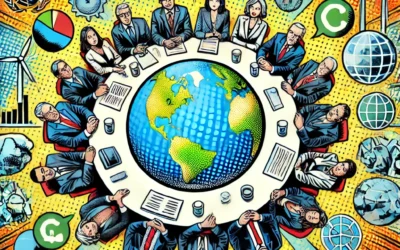Net Zero Goals By Country: How the World Is Tackling Climate Change
Net zero goals by country are the targets and plans that each nation has set to achieve net zero greenhouse gas emissions by a certain year. Net zero means that the amount of greenhouse gases emitted into the atmosphere is equal to the amount removed or offset by natural or human-made means.
Net zero goals by country are essential to limit the global warming to 1.5°C above pre-industrial levels, as agreed by the Paris Agreement. In this article, we will explore which countries have set net zero goals, when they plan to achieve them, and how they intend to do so.
Which Countries Have Set Net Zero Goals?
According to the Energy and Climate Intelligence Unit, as of November 2021, 137 countries have set net zero goals, covering 73% of global emissions and 68% of global population. These countries vary in size, income, and development, but they all share a common vision of a low-carbon future. Some of the countries with net zero goals are:
China: The world’s largest emitter and second-largest economy, China has pledged to reach carbon neutrality by 2060, and peak its emissions before 2030. China plans to increase its share of non-fossil fuels in primary energy consumption to around 25% by 2030, and expand its forest carbon sink by 6 billion cubic meters from 2005 levels.
United States: The world’s second-largest emitter and largest economy, the United States has committed to achieve net zero emissions by 2050, and reduce its emissions by 50-52% below 2005 levels by 2030. The United States plans to decarbonize its power sector by 2035, and invest in clean energy, infrastructure, and innovation.
European Union: The world’s third-largest emitter and largest trading bloc, the European Union has enshrined in law its goal to reach climate neutrality by 2050, and cut its emissions by at least 55% below 1990 levels by 2030. The European Union plans to implement a comprehensive set of policies and measures, such as the European Green Deal, the Fit for 55 package, and the Next Generation EU recovery fund.
India: The world’s fourth-largest emitter and second-most populous country, India has announced its intention to achieve net zero emissions by 2070, and reduce its emissions intensity by 33-35% below 2005 levels by 2030. India plans to increase its renewable energy capacity to 500 gigawatts by 2030, and create an additional carbon sink of 2.5-3 billion tonnes of CO 2 equivalent through forest and tree cover.
When Do Countries Plan to Achieve Net Zero Goals?
The timeline of net zero goals by country varies depending on their level of development, historical responsibility, and national circumstances. However, the earlier the goal, the better, as it implies a faster and deeper transition to a low-carbon economy.
According to the Carbon Neutrality Coalition, the majority of countries with net zero goals have set their target year at 2050, in line with the global aspiration of the Paris Agreement. However, some countries have set more ambitious or more realistic goals, depending on their situation. For example:
Bhutan and Suriname: These two countries are the only ones that have already achieved net zero emissions, and are actually carbon negative, meaning that they remove more carbon from the atmosphere than they emit. This is due to their abundant natural resources, such as forests and hydropower, and their limited industrial activities.
Uruguay and Finland: These two countries have the earliest net zero goals, aiming to reach carbon neutrality by 2030 and 2035, respectively. This is due to their high share of renewable energy, especially wind and biomass, and their strong political commitment and public support for climate action.
China and India: These two countries have the latest net zero goals, targeting 2060 and 2070, respectively. This is due to their large population, rapid economic growth, and heavy dependence on coal and other fossil fuels. However, these two countries also have huge potential and opportunities to accelerate their green transition, such as investing in solar, wind, and electric vehicles.
How Do Countries Plan to Achieve Net Zero Goals?
The pathways and strategies to achieve net zero goals by country depend on their specific context and conditions, but they generally involve three main actions: reducing emissions, removing emissions, and offsetting emissions. These actions can be implemented through various sectors and measures, such as:
Reducing emissions: This means cutting down the use of fossil fuels, and switching to clean and renewable sources of energy, such as solar, wind, or hydro. This also means improving the efficiency and conservation of energy, and adopting low-carbon lifestyles and behaviors, such as driving less, flying less, eating less meat, and consuming less.
Removing emissions: This means capturing and storing the greenhouse gases that are already in the atmosphere, and restoring the natural carbon sinks that can absorb and store them, such as forests, wetlands, or soils. This can be done through various technologies and practices, such as carbon capture and storage, bioenergy with carbon capture and storage, direct air capture, or afforestation and reforestation.
Offsetting emissions: This means compensating for the greenhouse gas emissions that cannot be reduced or removed, by investing in projects that reduce or remove greenhouse gases elsewhere, such as tree planting, renewable energy, or energy efficiency. This can be done through various mechanisms and markets, such as carbon credits, carbon taxes, or carbon trading.
Conclusion
Net zero goals by country are the targets and plans that each nation has set to achieve net zero greenhouse gas emissions by a certain year. Net zero means that the amount of greenhouse gases emitted into the atmosphere is equal to the amount removed or offset by natural or human-made means.
Net zero goals by country are essential to limit the global warming to 1.5°C above pre-industrial levels, as agreed by the Paris Agreement. Many countries have set net zero goals, covering most of the global emissions and population. The timeline of net zero goals by country varies from 2030 to 2070, depending on their situation and ambition.
The pathways and strategies to achieve net zero goals by country involve reducing emissions, removing emissions, and offsetting emissions, through various sectors and measures. Net zero goals by country are a challenge and an opportunity for the world, as they require urgent and radical actions and solutions, but they also offer multiple benefits and co-benefits for the environment and the society.






